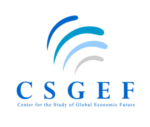
Russian Geo-economics Involvements in Central Asia
Since the newly independent states of the Caucasus and Central Asia (CCA) came into being in 1991, Russia has remained an important trade and economic partner of these two regions. However, several external and regional powers have revealed their interest in CCA, some becoming strong economic competitors challenging Russia’s economic prominence in CCA. However, that has not been the case with the United States. Washington’s highly publicized initiatives like the New Silk Road strategy (announced in 2011) or C5+1 format (2015) was ad hoc manifestation of intent rather than policy line backed by a sustainable focus on CCA and heavy investment. These initiatives failed to produce tangible results and bring the US’s increased economic engagement with CCA to the level challenging Russia’s economic footprint in these two regions. However, some American efforts − specifically US pipeline politics − weakened Russia’s geo-economic influence in the regions.
Trade
Currently, the leading trade partner for both the Caucasus and Central Asia is the EU27. If EU27 is excluded from the analysis and only countries are taken into account, Russia stands as the largest trading partner for both regions, with Russia’s share in the Caucasus trade at 14.3 percent and Central Asia’s trade at 21.5 percent (as of 2020). In sharp contrast, the US share is 3.4 percent for the Caucasus and 1.8 percent for Central Asia.
For individual CCA countries, the importance of Russia as a trading partner differs, but Russia’s share is quite big in all cases, varying from 10.1 to 30.3 percent (see Table 1). In 2020, Russia was the largest trading partner for such countries, like Armenia, Kyrgyzstan, and Tajikistan, the 2nd largest trading partner for Uzbekistan (after China) and Kazakhstan (after the EU27), the 3rd largest trading partner for Turkmenistan (after China and Turkey), Azerbaijan, and Georgia (after the EU27 and Turkey). Some CCA countries are heavily reliant on Russia as an export or import markets for specific products, which Moscow theoretically may use as economic leverage. That was the case, when in 2006-2013, Russia imposed an embargo on popular Georgian exports, including wine and mineral water.
For most CCA countries, the US is the 6th or 8th largest trading partner with a share not exceeding 3 percent in all cases except for Georgia, where the US’ share reached 5.6 percent in 2020. The largest trade volume between the US and CCA countries is between the US and Kazakhstan, CCA’s largest economy. In 2020, it totaled $1.4 billion, which was 13 times less than Russia-Kazakhstan’s trade turnover (see Table 2). The US trade with Georgia – the US’s closest political partner in CCA − was mere $0.6 billion. America’s trade turnover is less than $0.3 billion with other CCA countries, with really marginal trade with Tajikistan at $8 million.








